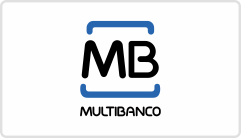07 Dec

If you’re standing at the checkout in a brick-and-mortar store, it’s easy enough to see when fellow shoppers become agitated and annoyed. Impatiently checking the time, audible ‘harrumphs’ and negative body language are all tell-tale signs that the in-store payment process is not proceeding as smoothly as desired. But how does this frustration manifest itself in online shopping behavior? The tyranny of distance removes all physical cues, but it is crucial for merchants to identify and address points of friction, in order to improve the overall shopping experience and maximize conversion rates.
Tracking online shopping behavior, for example through clicks and conversions, does yield data that payment providers can use to refine checkout and payment processes. It has been shown, for instance, that including the three most popular alternative payment methods in any given market can increase a merchant’s conversion rate by up to 30%. Services such as those offered by ClickTale go deeper, with heatmap analytics and other powerful tools to understand online shopping behavior. But a recent study may add something new to payment providers’ and merchants’ analytical arsenal – the ability to analyze annoyance.
New insights into online shopping behavior
According to the Brigham Young University study, when users are upset or confused, mouse movements become jagged and imprecise, rather than following a straight or gently curving path. Somewhat counter-intuitively, upset users also tended to move their mouse cursor more slowly. The ability to process sufficient data in order to draw such conclusions was a requirement for the study, which could potentially have a range of practical implications for web developers seeking to reduce pain points that generate negative emotions.
“Traditionally it has been very difficult to pinpoint when a user becomes frustrated, leading them to not come back to a site,” said Jenkins. “Being able to sense a negative emotional response, we can adjust the website experience to eliminate stress or to offer help.”
Reducing friction at the checkout
The resulting technology has already been patented and spun off to a local startup company that holds the license. How exactly this may be developed for use in the payments and e-commerce space remains to be seen, but the continued “API-ization” of payments means that it is conceivable that common shop plugins already used by merchants could quite easily integrate this analytical technology.
As a result, payment providers and merchants could gain a more precise understanding of the aspects of the checkout experience that evoke negative emotions. Just how annoyed do shoppers get when a page loads slowly? Does confusion really reign when users are taken off page to complete their payment? Is frustration evident when certain payment methods are not available, or fail to function as they should? What about 3D Secure? These are all things that can increase friction, and ultimately lead to shopping card abandonment – the last thing a merchant wants. A better understanding and actionable insights can only be a benefit, especially when optimizing conversion rates can have such an impact on revenues.
But what about mobile?
The study in question is predicated on the presence of a mouse cursor, but with mobile shopping set to overtake traditional desktop e-commerce (mobile share of all online purchases is expected to be 40% by the end of the 2015 and the 50% “tipping point” not far behind), both payment providers and their merchants may be focusing attention elsewhere. A “mobile first” strategy will mean reducing friction and improving mobile payment flows, and gaining a deeper understanding of mobile shopping behavior. Whether a similar “analysis of annoyance” will be possible on touchscreen devices, via swipes and taps, remains to be seen (though the BYU study tentatively suggests it is possible).
The bottom line is that payment providers and merchants need to keep an open mind to using these sorts of new technology and tools that are being developed, in order to optimize payment setup across all channels.
And who knows, perhaps here at AllSecure we could put this technology to task as well, using it to gaining even greater insight into the user experience (UX) and usability of our own Developer Portal!





























